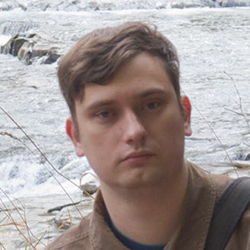CIERA Theory Group: Alexander Rasskazov

When:
Friday, November 15, 2019
12:00 PM - 1:30 PM CT
Where: 1800 Sherman Avenue, 4-4430, Evanston, IL 60201 map it
Audience: Faculty/Staff - Student - Post Docs/Docs - Graduate Students
Cost: Free
Contact:
CIERA Astrophysics
(847) 491-8646
Group: CIERA - Theory Group Meetings
Category: Lectures & Meetings
Description:
Friday Theory Meetings for Northwestern University's Center for Interdisciplinary Exploration and Research in Astrophysics (CIERA), this week featuring:
Observational signatures of intermediate-mass black holes
Alexander Rasskazov (Eotvos Lorand University of Budapest)
I consider two possible observational signatures of intermediate-mass black holes (IMBH). First, if a globular cluster containing an IMBH is disrupted close to the galactic center, the IMBH may form a binary with the central supermassive black hole. Such a binary would then eject hypervelocity stars (HVS), fast enough to escape the galaxy. By performing 3-body scattering experiments, I calculate the HVS velocity distribution as well as the rate of change of the IMBH's orbital parameters. An IMBH would eject HVS predominantly in its orbital plane, which is a way to distinguish it from the Hills mechanism (disruption of a stellar binary by a SMBH). These modeled HVS velocity distributions can be compared with the observed ones in the Milky Way to put constraints on the parameters of a potential IMBH in our galactic center. A more robust way to detect an IMBH would be via the gravitational waves emitted during its merger with another BH -- in particular, another IMBH. Such an event could result from a binary supermassive star formation in the GC center, or a merger between two GCs. Modeling their dynamical evolution together with evaporation of their host GCs, I calculate the binary IMBH (BIMBH) detection rates by LISA, aLIGO and Einstein Telescope. I find that if at least 10^-3 of all GCs become BIMBH hosts and the BIMBH masses are ~10^-2 of the GC mass, at least one of them will be detected by LISA during its 4-year mission lifetime; if the BIMBH/GC mass ratio is lower (~10^-3) but the fraction of BIMBH hosts among GCs is higher (~10^-2), some of those mergers will also be detected by aLIGO and ET.
Host: Giacomo Fragione